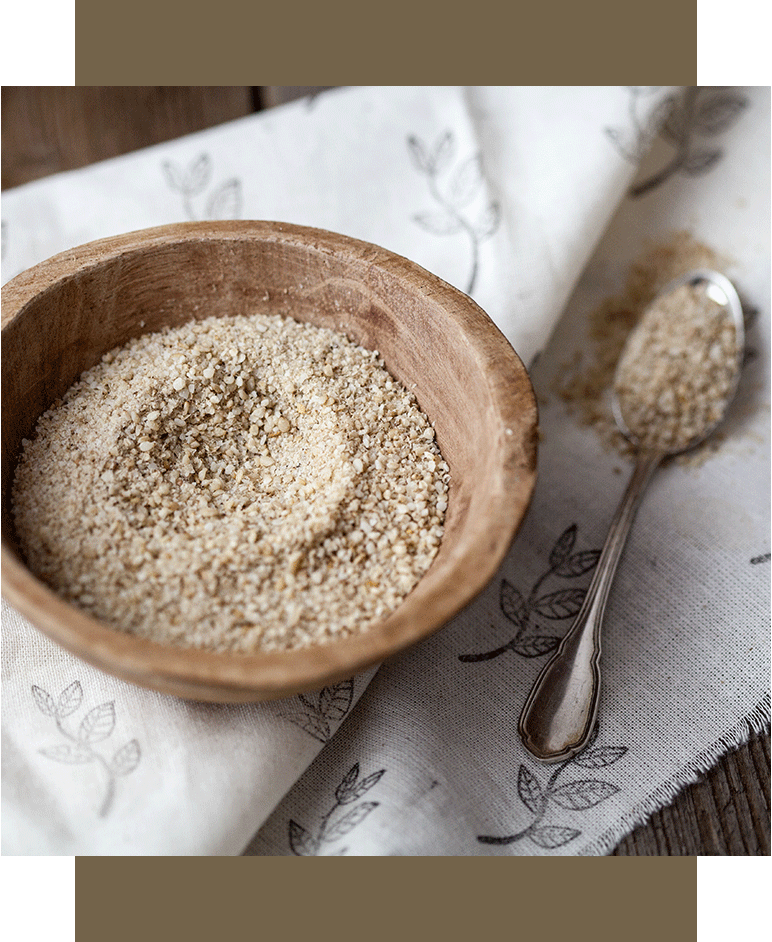In the kitchen, as in life, I am inspired by Asia - you have probably noticed that already :). Ayurvedic recipes are closest to me, but I also look with interest at Chinese five-transformation cuisine and macrobiotic recipes from Japan. It is amazing how much they have in common!
You have certainly noticed that just as important to me as oriental flavours, the natural origin of food and its health-promoting properties are… the ease and short time of preparing dishes. I am very busy - I don't have many hours to search for exotic ingredients in stores or cook complicated dishes, although I like it very much. That is why the exotic recipes I use in my kitchen must be express, healthy and… as multifunctional as possible, because I often prepare more food in advance, to use it later on the next occasion. Nothing goes to waste in my kitchen!
Just wanting to save from throwing away the stock of roasted sesame seeds that I had left after a Japanese dinner with friends, I remembered a recipe for gomasio, or sesame salt, that a friend of mine brought me from Japan. It is delicious, rich in nutrients, quick to prepare and unfortunately not very well-known in Poland. And so easy to make that I thought it was necessary to change that! After all, we all use too much salt - research shows that salt is the Poles' favourite spice, yet we should not consume more than 5 g of it per day. Unfortunately, it is also lurking in bread, cold cuts, cheeses... and yet a salt shaker stands on the table in almost every home. Let's add sesame to it and it will be much healthier. And, you will see, more delicious!
First, a word about macrobiotics. This is a model of nutrition that was formalized and described in the first half of the 20th century by the Japanese George Ohsawa. It is based on the traditional Japanese way of nutrition from the Edo period and aims to balance the yin and yang energy in food, which is to serve to strengthen health and build the vital forces of the body. Macrobiotics is complicated, like Ayurveda, but in some of its assumptions it is very similar to it. Today we will take a spice from it that will work well not only in exotic dishes, but also in traditional Polish cuisine.
Gomasio is sesame salt - or rather sesame with (more or less) added salt. It is salty, but also intriguingly nutty and incredibly enriches the taste of everything we add it to. Dishes we know will gain a completely new face with it! And we will gain health - not only will we consume less salt, but also more beneficial sesame. It is, for example, a rich source of zinc (almost 8 mg/100 g!) and calcium, as well as the important amino acid tyrosine.
How to make this wonder? As always in my kitchen - very easy and quick! To prepare gomasio you only need sesame and salt. Their proportion is important, which should be five, six or even ten parts of sesame to one part of salt. You will work out the ideal amount for yourself, adjusting it to your taste preferences. I suggest that gomasio is delicious in any version!
What's next? Toast the selected amount of sesame seeds in a dry pan for 3-4 minutes, stirring constantly, until the seeds start to crackle, jump slightly and smell wonderfully appetizing. Then pour them from the pan onto a plate to cool faster and mix with table salt. Grind everything in a blender or coffee grinder into a fine powder. Done!
Of course, you can modify the recipe. The spice will also be delicious if you add a little sunflower seeds or coriander, roasted seaweed, cumin or pepper. Store it in a tightly closed jar in a dark place. And see how it tastes with products that you usually just salt!






